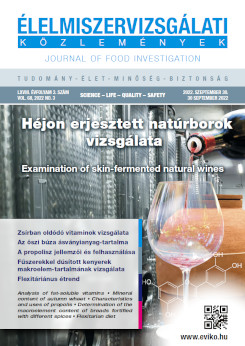Flexitarianism – the sustainable food consumption?
Main Article Content
Absztrakt
Flexitarians became the largest dietary group after omnivores, they play a significant role when it comes to effectively reducing the consumption of meat and other animalderived products and thus in fighting climate change. Looking at all those, who actively reduce or fully exclude at least some animal products, including vegetarians, pescetarians and flexitarians, the group in total represents 30.8% of the population: 10 to 30 % of Europeans no longer consider themselves full meat-eaters anymore. However, there are substantial differences in the proportion of consumers considering themselves and/or categorised as flexitarian. Furthermore, the lack of a definition or at least a wide consensus on what to be considered a flexitarian diet makes it even more difficult to estimate the size of this consumer group.
Why could the classification of flexitarianism still be useful and support a sustainable food consumption? Instead of following strict rules, strengthening consumers’ efforts to pursue a more sustainable diet according to their own intention (such as following a flexitarian eating pattern) may be more effective.
Different food consumption patterns are described in this article from omnivores via reducetarians, flexitarians, vegetarians to vegans, where possible definitions and data are provided on the proportion of consumers following such diet patters.

